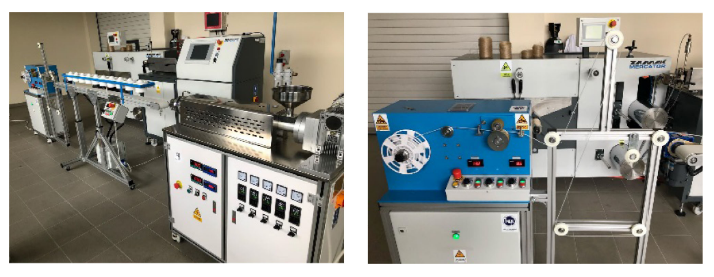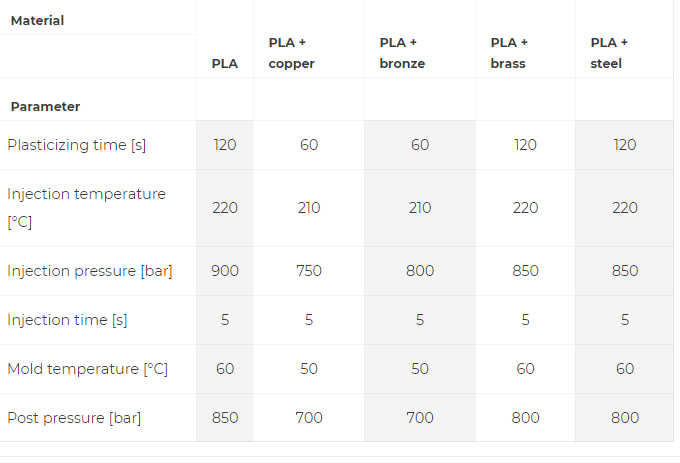Researchers from Poland are examining better ways to use materials in 3D printing, detailing their study in the recently published ‘Polymer Composites Used in Rapid Prototyping Technology.’ As accessibility and affordability continue to play a huge role in the growing mainstream popularity of 3D printing, the demand for materials of all kinds increases.
While ABS and PLA are the most commonly used thermoplastics—each with their own pros and cons—many new alternative materials have arrived on the market today. Additives, blended with more primary sources to create composites, allow for a much greater range to choose from when faced with requirements for new projects.
PLA is often made into a composite. As the top choice in FDM 3D printing, it offers benefits such as being plant-based and non-toxic, biodegradable, and operating from a low melting point.
“PLA also has undesirable features such as low toughness, elongation at break of less than 10%, and slow degradation; therefore, unfilled PLA should be supplemented by the introduction of additives, that is, the synthesis of nanocomposites,” state the researchers.
“By creating polymer composites based on a biodegradable polymer, we obtain a composition that is degradable and meets practical requirements.”
Nanoadditives promote better efficiency, strength, and functionality in parts and prototypes, with powder or fillers composed of flakes becoming more popular due to flexibility in production, corrosion resistance, and improved processing.
“Fillers with a large specific surface are, for example, metal particles to be introduced in a certain amount and the content that causes the particles to be packed close together, which guarantees an uninterrupted conducting path (guarantee of high-electrical conductivity),” stated the researchers.
In this study, bronze, copper, brass, and steel were added to the PLA.
Materials were used to fabricate fittings such as bars and paddles via injection molding and FDM 3D printing.
An Ultimaker 3 Extended printer was used for rapid prototyping, with testing performed at the Rzeszów University of Technology. The researchers assessed materials for the following:
- Mass melt flow index
- Rockwell hardness
- Charpy impact strength
- Strength during static tensile test
“By analyzing the results obtained, it can be concluded that the introduction of reinforcing fillers of various shapes and sizes (nanometer scale) facilitates the flow of the material, which improves the usability of the composition in the processing processes and reduces the processing shrinkage,” concluded the researchers.
“The introduction of metallic nanofillers caused a decrease in the hardness of the unfilled material. The composition of PLA filled with steel obtained the lowest results among the tested materials (52.52 N/mm2 for details obtained by 3D printing and 85.4 N/mm2 for elements obtained by the second method).”
So many different types of composites are being used today, from carbon composites to wood to natural fiber. What do you think of this news? Let us know your thoughts! Join the discussion of this and other 3D printing topics at 3DPrintBoard.com.
[Source / Images: ‘Polymer Composites Used in Rapid Prototyping Technology’]Subscribe to Our Email Newsletter
Stay up-to-date on all the latest news from the 3D printing industry and receive information and offers from third party vendors.
You May Also Like
3D Printing Unpeeled: New Arkema Material for HP, Saddle and Macro MEMS
A new Arkema material for MJF is said to reduce costs per part by up to 25% and have an 85% reusability ratio. HP 3D HR PA 12 S has been...
3D Printing News Briefs, January 20, 2024: FDM, LPBF, Underwater 3D Printer, Racing, & More
We’re starting off with a process certification in today’s 3D Printing News Briefs, and then moving on to research about solute trapping, laser powder bed fusion, and then moving on...
3D Printing Webinar and Event Roundup: December 3, 2023
We’ve got plenty of events and webinars coming up for you this week! Quickparts is having a Manufacturing Roadshow, America Makes is holding a Member Town Hall, Stratafest makes two...
Formnext 2023 Day Three: Slam Dunk
I’m high—high on trade show. I’ve met numerous new faces and reconnected with old friends, creating an absolutely wonderful atmosphere. The excitement is palpable over several emerging developments. The high...




































